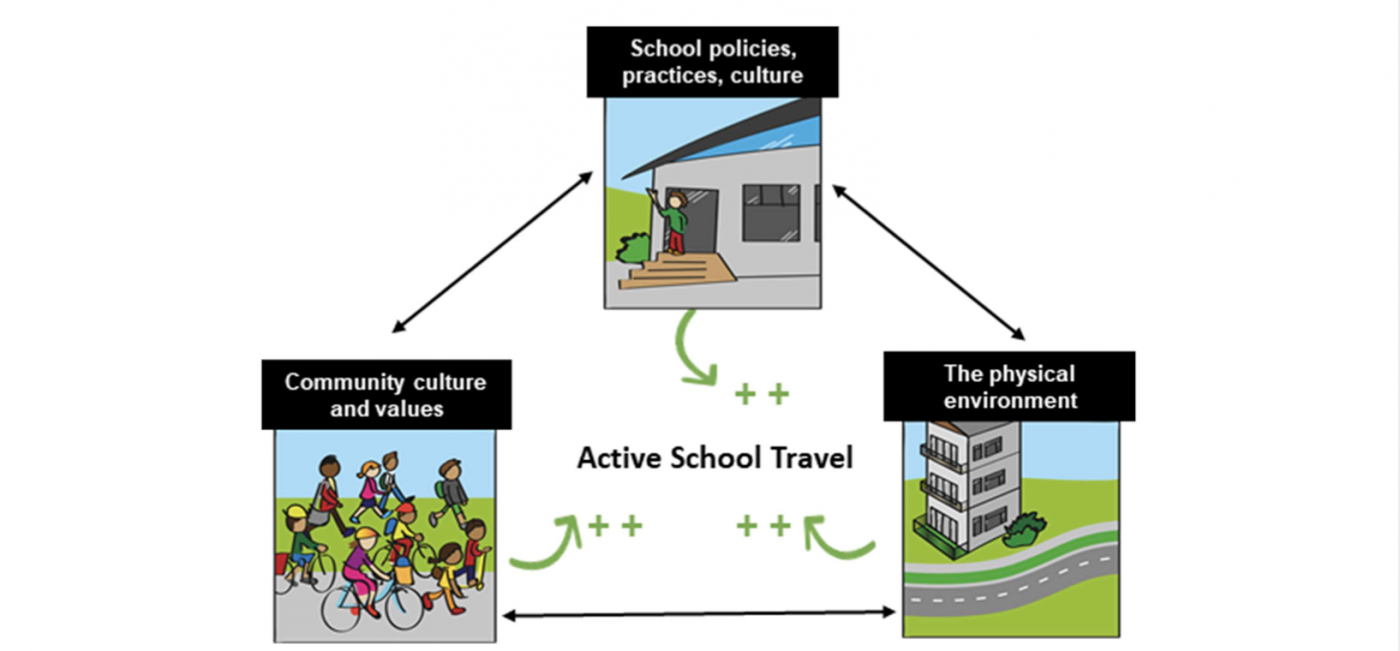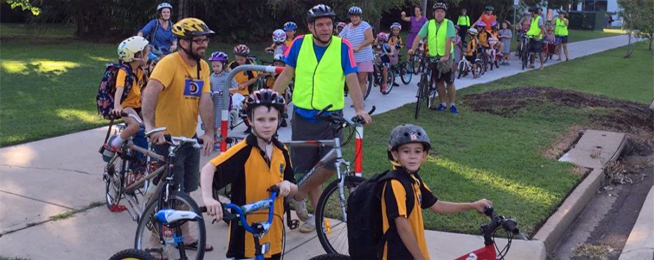While rates of active travel to school have been in decline around the world for decades, some school communities seem immune from school drop-off disease.
While one school can have half of its students arriving bright and bouncy in the classroom after getting there by bike or walking, the school in the next suburb will have most of its students couriered to the front door by motor vehicle.
Why can one school manage to get children partaking in the daily activity essential to their physical and mental development while the other can’t?
According to research from New Zealand there is no one simple answer. Rather, a range of school culture, community culture, and physical environment settings needed to be in play, and reinforcing each other, for the magic to happen.
The researchers looked at a number of exemplar schools with high active travel rates to determine what factors may have contributed to their active travel success.
Essentially, schools supported active travel because physical activity was believed to aid student learning, but this support was conditional on a traffic safety threshold being met.
In some cases, an “outdoorsy”, active and sporty culture in the local community was a strong influence, and active travel to school seemed more natural for students and parents.
In other places the local council and the schools were active in developing transport plans that would encourage active travel while dealing with traffic safety concerns.

One school achieved a massive boost on bike travel just by putting in a bike shed.
But all the schools seemed to have achieved a state where active travel was normalised and accepted, and the school community often did not think they were doing anything special.
The built environment features that were viewed as supporting student safety were safe crossing facilities, off-road walking and cycling paths, quieter routes that avoided main roads, and lower traffic speeds.
"Insights from this research suggest that active school travel is influenced by the interaction of context-specific factors," the authors said.
"Locally-based, context-specific interventions that not only remove active school travel barriers, but also foster repeated positive reinforcement across school, community, and environmental factors should be encouraged.
"Our findings broadly support the multi-faceted and collaborative intention of current active school travel intervention models.”
They said that consideration should be given to framing active school travel policy and interventions in terms of student learning as well as broader environmental and health values of schools.
Bicycle Network's Ride2School program have been spreading this message around the country for a decade, offering grants toward bike riding facilities, bike education programs, active path designs in local communities and a range of initiatives to encourage involvement in the main calendar event, National Ride2School Day.
Registrations are now open for National Ride2School Day 2020, with more than 350,000 students around the country expected to get involved.
LEARN MORE ABOUT RIDE2SCHOOLBecome our friend
Find out more about Bicycle Network and support us in making it easier for people to ride bikes.


